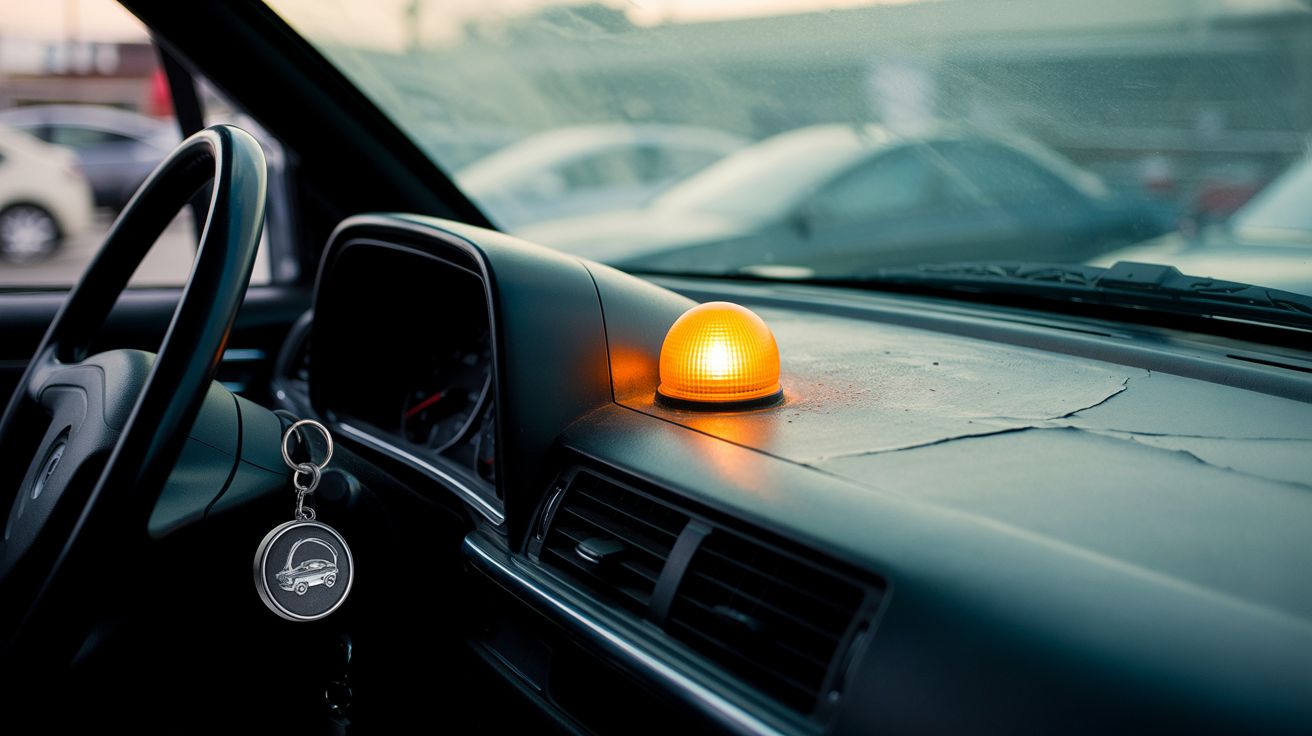The Car Maintenance Lie That's Draining Your Wallet
The Odometer's Siren Song
Remember that feeling of accomplishment when your car hit a major mileage milestone? 30,000 miles, 60,000 miles, maybe even the coveted 100,000. These numbers, often prominently displayed in your owner's manual, have become deeply ingrained in our understanding of car maintenance. We see them as checkpoints, mandatory pit stops where we dutifully hand over our hard-earned cash for a pre-determined list of services. But what if I told you that blindly following these mileage-based recommendations is often a costly mistake, a lie perpetuated by outdated thinking and, sometimes, by those looking to pad their bottom line?
The truth is, modern vehicles are far more sophisticated and durable than their predecessors. The "one-size-fits-all" approach to maintenance simply doesn't apply anymore. Factors like your driving habits, the climate you live in, and the specific make and model of your car all play a significant role in determining when and what type of maintenance is truly necessary. Ignoring these factors and adhering rigidly to the odometer's siren song can lead to unnecessary services and a significantly lighter wallet.
The Myth of the "Scheduled Service" Package
Walk into almost any automotive service center, and you'll be greeted with a menu of "scheduled service" packages. These packages, often tied to specific mileage intervals, promise to keep your car running smoothly with a comprehensive list of services. Sounds reassuring, right? The problem is, these packages are often designed to maximize profit, not necessarily to optimize your car's performance. They frequently include services that are either premature or entirely unnecessary based on your individual driving conditions.
For example, a "30,000-mile service" might include a coolant flush, even if your coolant is still in excellent condition. Or it might recommend replacing spark plugs, even though they're designed to last much longer. The key is to understand that these packages are a starting point, not a gospel. Question the recommendations, ask for explanations, and don't be afraid to decline services that seem excessive or unwarranted. Remember, you're the one paying the bill.
Driving Habits: The Unsung Hero of Maintenance
How you drive your vehicle has a profound impact on its maintenance needs. Someone who primarily drives short distances in stop-and-go traffic will have different maintenance requirements than someone who primarily drives long distances on the highway. Stop-and-go driving puts more stress on your brakes, transmission, and engine, leading to more frequent maintenance needs. Conversely, highway driving is generally easier on your car, allowing you to extend the intervals between certain services.
Aggressive driving habits, such as frequent hard acceleration and braking, also take a toll on your vehicle. These habits can accelerate wear and tear on your tires, brakes, and engine, requiring more frequent replacements and repairs. By adopting smoother, more fuel-efficient driving techniques, you can not only save money on gas but also extend the life of your car and reduce your maintenance costs. Consider your daily commute and driving style when evaluating maintenance recommendations.
Climate Considerations: Hot, Cold, and Everything In Between
The climate in which you live also plays a significant role in determining your car's maintenance needs. Extreme temperatures, whether hot or cold, can put extra stress on your engine, battery, and other components. In hot climates, for example, your engine oil can break down more quickly, requiring more frequent oil changes. The intense heat can also damage rubber components, such as hoses and belts, leading to premature failure.
In cold climates, your battery has to work harder to start your engine, especially in sub-zero temperatures. This can shorten its lifespan and require more frequent replacements. Road salt, used to de-ice roads in winter, can also accelerate corrosion and damage your car's undercarriage. If you live in an area with extreme weather conditions, it's essential to adjust your maintenance schedule accordingly. Consider using synthetic oil, which performs better in extreme temperatures, and regularly inspect your car for signs of corrosion.
Decoding Your Owner's Manual: Beyond the Mileage Chart
While blindly following the mileage chart in your owner's manual can be a mistake, the manual itself is still a valuable resource. However, it's important to read it carefully and understand the nuances of the recommendations. Pay attention to the "severe driving conditions" section, which outlines specific maintenance requirements for vehicles that are driven in demanding conditions, such as stop-and-go traffic, extreme temperatures, or dusty environments. If your driving habits fall into this category, you'll need to adjust your maintenance schedule accordingly.
Also, remember that the owner's manual is a general guide, not a definitive prescription. It's always a good idea to consult with a trusted mechanic who can assess your car's specific needs based on your driving habits and local conditions. Don't be afraid to ask questions and challenge recommendations that seem excessive or unnecessary. Your mechanic should be able to explain the reasoning behind each service and provide you with a clear understanding of its benefits.
The Power of Observation: Listening to Your Car
One of the most effective ways to avoid unnecessary maintenance is to simply pay attention to your car. Your vehicle is constantly communicating with you, providing subtle clues about its condition. Listen for unusual noises, such as squealing brakes, grinding gears, or knocking engines. Pay attention to changes in performance, such as decreased fuel economy, sluggish acceleration, or rough idling. And be aware of any warning lights that illuminate on your dashboard.
These signs can indicate underlying problems that need to be addressed. By catching these problems early, you can often prevent them from escalating into more serious and costly repairs. Don't ignore these warning signs. Schedule a checkup with your mechanic as soon as possible to diagnose the problem and get it fixed before it causes further damage. Proactive maintenance is always cheaper than reactive repairs.
Finding a Trustworthy Mechanic: Your Automotive Ally
Perhaps the most crucial step in avoiding unnecessary maintenance is finding a trustworthy mechanic. A good mechanic will not only provide quality service but also offer honest and unbiased advice. Look for a mechanic who is certified by the National Institute for Automotive Service Excellence (ASE), which indicates that they have met certain standards of competence and professionalism. Ask for recommendations from friends, family, or online reviews. And don't be afraid to shop around and get multiple estimates before committing to any repairs.
Once you've found a mechanic you trust, build a long-term relationship with them. Regular communication and consistent service will allow them to become familiar with your car's specific needs and provide you with personalized maintenance recommendations. A good mechanic will also be willing to explain the reasoning behind each service and answer any questions you may have. They should be your automotive ally, helping you keep your car running smoothly and avoid unnecessary expenses.
Taking Control: Your Car, Your Money, Your Choice
Ultimately, the responsibility for your car's maintenance lies with you. Don't blindly trust the odometer or the "scheduled service" packages. Take the time to understand your car's specific needs, based on your driving habits, climate, and the recommendations in your owner's manual. Find a trustworthy mechanic who can provide you with honest and unbiased advice. And don't be afraid to ask questions and challenge recommendations that seem excessive or unwarranted. By taking control of your car's maintenance, you can save money, extend its lifespan, and enjoy a more reliable and enjoyable driving experience. The world of automotive maintenance can be confusing, but with a little knowledge and proactive engagement, you can avoid the common pitfalls and keep your vehicles running smoothly without breaking the bank.
Remember, knowledge is power. Arm yourself with information, be proactive in your approach to maintenance, and don't be afraid to question the status quo. Your wallet will thank you for it. So, the next time you see that mileage milestone approaching, don't automatically reach for your checkbook. Instead, take a moment to assess your car's actual needs and make informed decisions about its maintenance. You'll be surprised at how much money you can save.
Ready to Take Control of Your Car Maintenance?
Don't let outdated maintenance schedules drain your wallet any longer! Start by reviewing your owner's manual and understanding the specific needs of your vehicle. Find a trustworthy mechanic who can provide personalized advice and help you create a maintenance plan that's tailored to your driving habits and local conditions. And most importantly, be proactive in your approach to maintenance. Pay attention to your car's warning signs, ask questions, and don't be afraid to challenge recommendations that seem excessive or unnecessary. By taking control of your car's maintenance, you can save money, extend its lifespan, and enjoy a more reliable and enjoyable driving experience. What are you waiting for? Start saving today!



